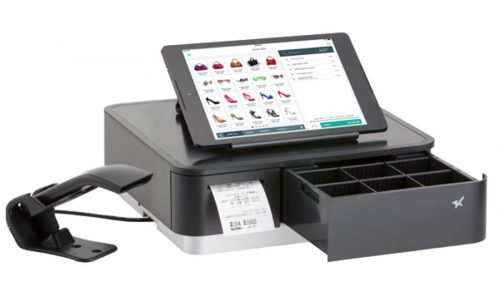
To begin purchasing a POS system, you need to know what kind of hardware you’ll need. To know about POS hardware, firstly, we’ll have a look at POS providers.
POS system providers with a POS system, you may collect consumer payments and monitor sales. However, the structure may operate in various ways depending on whether you sell online, in person, or both. Using a tablet or phone with internet access and a POS app is all that’s required.
Mobile POS, smartphones, tablets, card readers, touch screens, PCs, self-service kiosks, and terminals are just a few of the various POS devices available. Barcode scanners, cash drawers, keyboards, and receipt printers are other POS-related equipment.
This is a display screen for staff to utilize when engaging with customers, checking out the merchandise, etc. If any problems or issues need to be addressed, the POS console will display them. Users may enter data into the POS system using a keyboard. Users may move through the POS system’s menu options by clicking, scrolling, etc. A credit card reader/swipers enter the customer’s credit card information for payment processing. Printing tickets for receipt reasons or shipping/receiving printed labels on a printer.
For your POS system to work, you need a cash drawer and a printer to be installed. Depending on how many registers you have, what sort of checks and or counter (if buying a self-checkout option), what items you’re selling, and whether consumers may enter their information into the system, you may require additional hardware.
Hosted, cloud-based, and on-premises POS system suppliers are all available. The POS hardware is included in the service provided by hosted and cloud-based systems. Hardware purchases must be made by those who purchase On-Premises software. Each type’s hardware requirements differ significantly, although the components listed above are often required.
On-Premises and Cloud-based systems are normally less costly; however, many Hosted providers provide clients the option of purchasing their POS system hardware at no additional cost. If you’re searching for a service provider, be sure they can meet your unique hardware needs. Customers may choose from a wide range of hardware options when signing up for a Hosted POS service.
The following are common POS system hardware types:
A Stand-Alone Terminal (SAT) terminal connects directly to a router or modem without going through a server first. Uses include gas stations and restaurants with limited access.
Ethernet terminals – this terminal class sends data back to the store’s computer via an Ethernet cable. The advantage is that they don’t need batteries or power cords, but their range can be shorter than Wifi-based devices unless you have extensive cabling in your store. Some newer models will work over Wifi, letting you save money on cabling costs while also having the added flexibility of Wifi.
Wifi terminals – these types of POS terminals will store data on SD cards or USB flash sticks and send the information back to a router connected to a central cash register (computer).
IP terminals – like wifi terminals- do not require an actual physical connection between the device and the server/register. These devices also typically use “cloud computing” instead of storing data directly. This allows for increased speed and processing capabilities but may introduce security issues such as loss of information if the cloud service provider has a catastrophic failure. This type can be costlier than traditional machines due to requiring an internet connection and depends on the reliability of the Internet service at your location.
Touchscreen-based terminals – these devices require a touch screen to operate. The data is sent via an Ethernet cable, Wifi, or IP connection.
Countertop terminals – are larger versions of VDT’s that have their keyboards and can be mounted on counters or carts for ease of use. They often have standard printers attached to them as well. Some models feature full-sized monitors that swivel out from the side, rather than needing to be propped up separately like countertops do.
Mobile POS – this type of terminal will usually connect to your phone or tablet via Bluetooth or USB cable and allow you to process transactions directly from your device. Although they do offer the advantage of convenience for small retailers moving around all day, they also introduce security concerns similar to IP devices.
Debit/Credit scanners – are POS peripherals that allow cashiers to swipe customers’ credit cards instead of manually entering them into the system. This can reduce errors in entry and speed up processing but is reliant on having a well-trained cashier who won’t be tempted to skim debit card numbers while they’re running them through.
RFID scanners – these scanners use radio waves and special RFID readers to scan items and determine what they are without requiring input from a human operator. They do not require contact with the object being observed, which means that it can quickly scan very large batches. It also reduces mishandled or lost goods due to misplacing an item.
The disadvantages of this type are that it is expensive to buy and maintain. RFID tags cost more than traditional barcode stickers. If a title becomes damaged or falls off an item, it can be difficult to determine what kind of product was lost without going through all of the things you have inventory.
Interesting Related Article: “What Kind of Businesses Use POS Software?“

